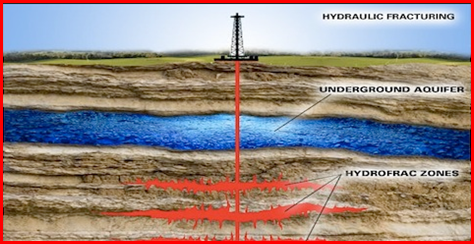All Those Environmentalists Who Love Renewable Energies Are Definitely Against Hydraulic Fracking
Here is the thing. Most renewable energy sources can not be turned on and off to suite the peak demands of the power required and storage at the present time does not exist in large enough capacities. So there is still a need for the fossil fuel power plants.
Natural gas is by far the cleanest of the fossil fuels and another huge advantage it has is that power plants running on natural gas can ramp up and down quickly to suit the daily varying power demands. So these plants are a perfect complement for renewable energy sources at this point in time.
And the only way to get enough natural gas is to use fracking.
The wholesale price of electricity is measured by marginal cost, with the cheapest going on line first. Because renewables are essentially free to switch on, they’re the lowest part of the order, or supply stack, and are automatically connected to the grid. The minute-to-minute variations in solar and wind output from cloud cover or interrupted winds adds another layer of variability to the inescapable daily variation in renewable output.
That variation within daily variability is met by either gas- or oil- fired peaking units, named for their ability to meet fluctuations in peak demand quickly. While gas-fired peaking units are less efficient than their large combined-cycle counterparts, most of them are capable of ramping up to full output within just a few minutes to offset either an unexpected or expected fall in renewable production. Large natural gas combined-cycle units are ostensibly cleaner than coal plants and the same is true of gas-fired peaking units versus their oil counterparts.
When all options were available, hydroelectricity is actually the perfect way of compensating for variation in renewable production. Hydro power ramps up nearly instantaneously, emits few greenhouse gases, if any, and has almost no marginal cost, which determines electric wholesale prices. However, it is limited both to specific locations and in total quantity. Only 6 percent of American electricity is generated by hydropower, and most of it is consumed within state lines.
Record low natural gas prices induced by the fracking boom have made it more economical and a more likely choice for power generators. The cost of natural gas delivered to power plants peaked at $9.26 in 2008 and averaged $5.19 in 2014. In addition, the EPA’s Mercury and Air Toxics Standards make cleaner-burning natural gas a better choice for most generators. The EPA’s Clean Power Plan rules, yet to be fully fleshed out, are also expected to make early retirements for coal plants more attractive. This two-pronged move to natural gas is expected to incent increased natural gas-fired capacity, which can ramp up electric generation at a moment’s notice and increasingly supports renewable energy development.
The paradigm is usually framed as renewables instead of fossil fuels — what economists would call substitutes, as opposed to compliments. However, as natural gas compliments renewable energy, they become increasingly price dependent. For example, peanut butter and jelly are also compliments because they’re usually eaten together. If the cost of peanut butter goes down, people will eat both more peanut butter as well as more jelly, assuming that the cost of jelly hasn’t changed. Likewise, when the price of natural gas goes down, so does the effective cost of renewables, which are made ever more plausible by gas-fired generation.
Read More at the original article
Feature Image Source



